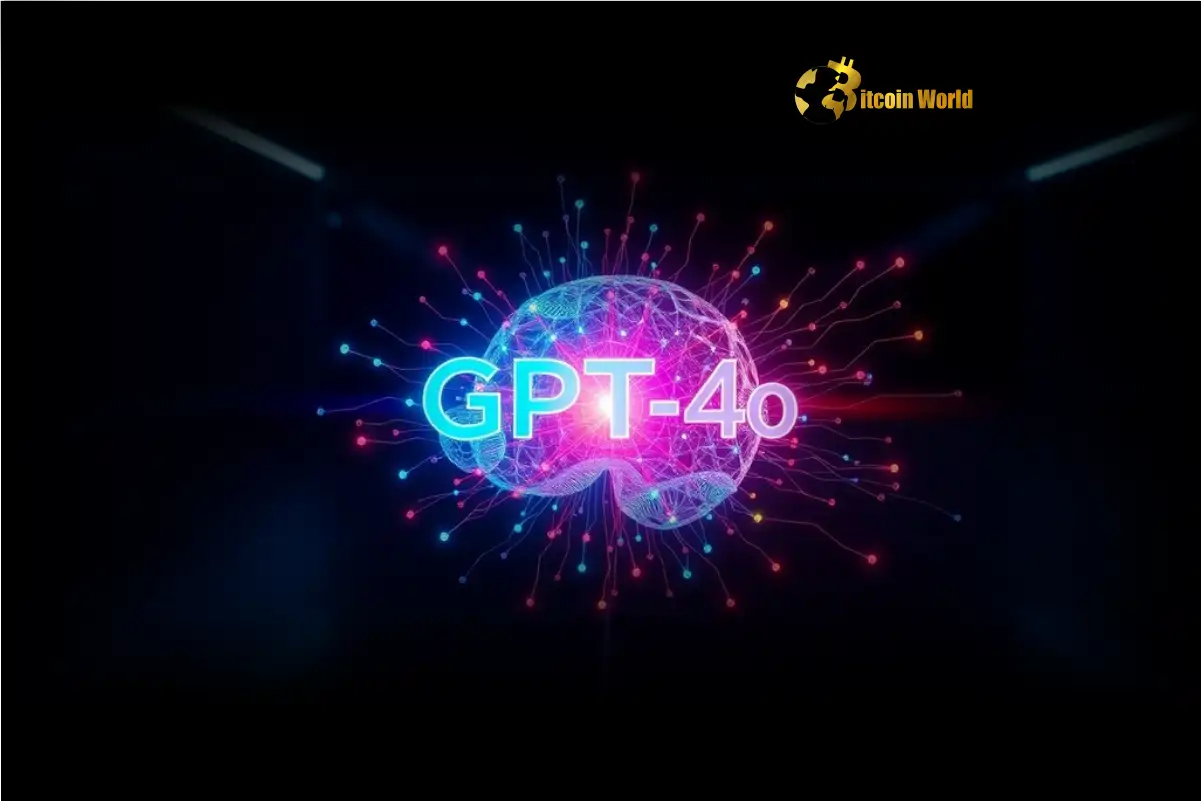In a surprising turn of events in the fast-paced world of artificial intelligence, OpenAI has announced the retirement of its groundbreaking GPT-4 AI model from ChatGPT. This marks a significant transition as the company gears up to fully embrace its successor, GPT-4o. For those in the cryptocurrency and blockchain space, where cutting-edge technology is always on the radar, this development is worth paying attention to. Just as blockchain technology constantly evolves, so too does AI, and OpenAI’s move highlights this relentless innovation. Let’s dive into what this change means for users and the broader AI landscape.
Why is OpenAI Retiring GPT-4 from ChatGPT?
Effective April 30th, GPT-4 will no longer be the default model powering ChatGPT. OpenAI stated in a recent changelog that GPT-4o will completely replace GPT-4 within ChatGPT. However, it’s crucial to note that GPT-4 will remain accessible through OpenAI’s API. This strategic decision isn’t about phasing out GPT-4 entirely but rather streamlining the user experience on ChatGPT with their latest and most powerful offering, GPT-4o.
OpenAI emphasized the superior capabilities of GPT-4o compared to its predecessor. According to their evaluations, GPT-4o consistently outperforms GPT-4 in key areas such as:
- Writing: Generating more coherent, engaging, and contextually relevant text.
- Coding: Producing more efficient and accurate code across various programming languages.
- STEM (Science, Technology, Engineering, and Mathematics): Demonstrating enhanced problem-solving and analytical skills in technical domains.
Furthermore, OpenAI highlighted recent upgrades to GPT-4o that have significantly improved its:
- Instruction Following: Better understanding and executing complex and nuanced instructions.
- Problem Solving: More effectively tackling intricate problems and providing insightful solutions.
- Conversational Flow: Engaging in more natural, fluid, and human-like conversations.
These enhancements solidify GPT-4o as the “natural successor” to GPT-4, as per OpenAI’s official statement.
GPT-4: A Look Back at a Groundbreaking AI Model
Launched in March 2023, GPT-4 quickly became a cornerstone of both ChatGPT and Microsoft’s Copilot chatbot. It marked a significant leap forward in AI technology, introducing multimodal capabilities that were revolutionary at the time. GPT-4 could understand and process both images and text, a first for a widely accessible OpenAI model. This advancement opened up new possibilities for user interaction and application development.
GPT-4 was also a substantial investment for OpenAI. CEO Sam Altman revealed that training GPT-4, reportedly a massive model in size, cost over $100 million. This figure underscores the immense resources and effort required to develop state-of-the-art AI models like GPT-4.
In November 2023, GPT-4 was succeeded by GPT-4 Turbo, a faster and more cost-effective model. This progression demonstrates OpenAI’s commitment to continuous improvement and optimization within its AI model ecosystem.
The Controversy: GPT-4 and Copyright Disputes
GPT-4 hasn’t been without its controversies. It’s been at the center of copyright disputes between OpenAI and major publishers, including The New York Times. These publishers allege that OpenAI trained GPT-4 on their copyrighted data without proper authorization or consent. This raises critical questions about data usage, intellectual property rights, and the ethical considerations surrounding the training of large language models.
OpenAI, however, defends its practices by invoking the fair use doctrine, arguing that their use of publicly available data for training purposes falls under this legal principle. This ongoing debate highlights the complex legal and ethical landscape surrounding AI model development and data usage, a discussion that is particularly relevant in the decentralized and data-conscious world of cryptocurrency.
What’s Next After GPT-4’s Retirement from ChatGPT?
The retirement of GPT-4 from ChatGPT is likely a precursor to the introduction of even newer and more advanced AI models. According to reverse engineer Tibor Blaho, OpenAI is preparing to launch a family of models under the GPT-4.1 umbrella, including:
- GPT-4.1 mini
- GPT-4.1 nano
- GPT-4.1
Additionally, OpenAI is reportedly working on:
- The o3 “reasoning” model, announced in December.
- A new reasoning model called o4-mini.
These developments suggest that OpenAI is not slowing down its pace of innovation. The rapid evolution of AI models like GPT-4 and GPT-4o underscores the dynamic nature of the AI field, mirroring the constant advancements seen in blockchain and cryptocurrency technologies. For those in the crypto space, understanding these AI advancements is crucial as AI and blockchain increasingly intersect, offering potential synergies and transformative applications.
Key Takeaways: GPT-4’s Legacy and the Rise of GPT-4o
Let’s summarize the crucial points regarding GPT-4’s retirement and the transition to GPT-4o:
| Aspect | GPT-4 | GPT-4o |
|---|---|---|
| Availability in ChatGPT | Retiring on April 30th | New Default Model |
| Availability in API | Remains Available | Available |
| Performance | Groundbreaking, Multimodal | Superior in writing, coding, STEM, instruction following, problem-solving, and conversation |
| Successor | GPT-4 Turbo | Likely GPT-4.1 series and beyond |
OpenAI’s decision to replace GPT-4 with GPT-4o in ChatGPT is a testament to their commitment to providing users with the most advanced AI model technology. While GPT-4 leaves behind a legacy of innovation and groundbreaking capabilities, GPT-4o is poised to take center stage, promising enhanced performance and a more seamless user experience. For those in the cryptocurrency world and beyond, this transition highlights the relentless pace of technological advancement and the importance of staying informed about these transformative shifts.
To learn more about the latest AI model trends, explore our articles on key developments shaping AI features and institutional adoption.
[ad_2]
Source link






